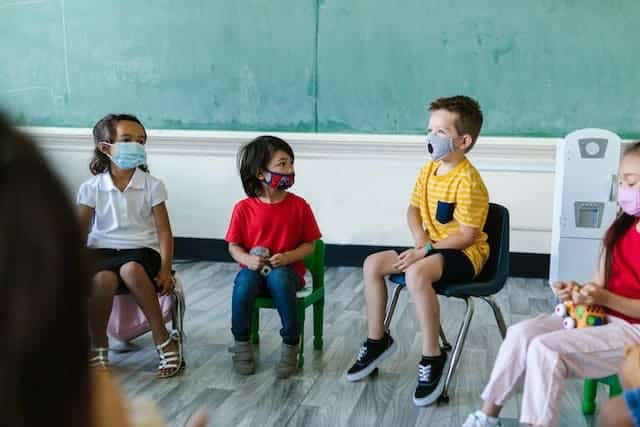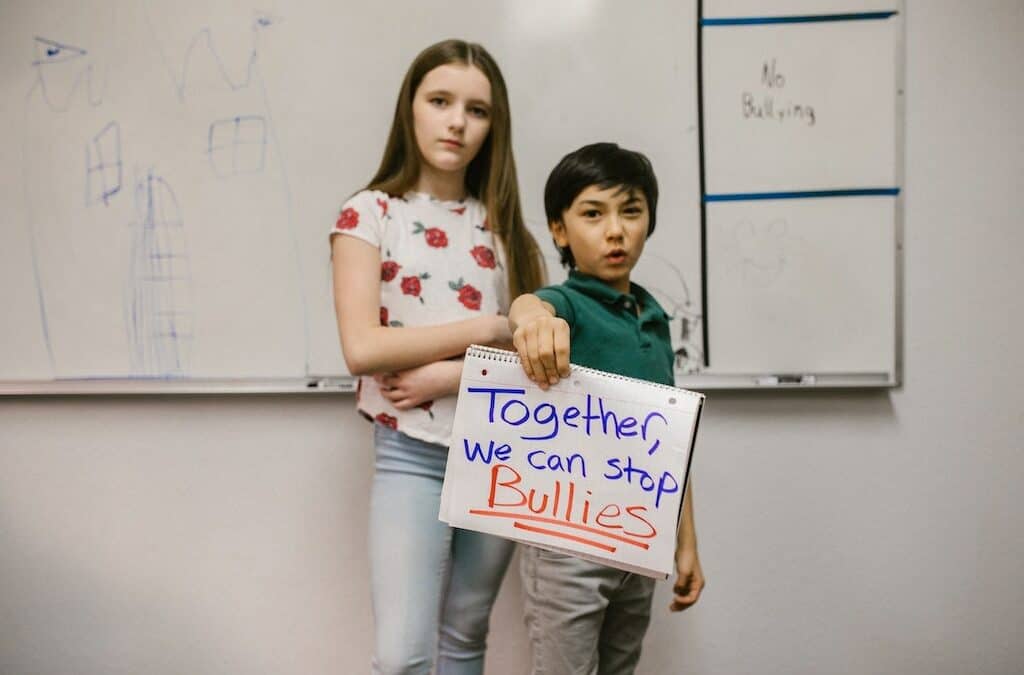Bullying can be one of the most devastating experiences of a child’s life. Studies have shown that there are several negative effects of bullying that impact everyone involved, including the child on the receiving end as well as the child who does the bullying behavior. (MentalHealth) Bullying can have long-lasting, detrimental effects on a person’s self-esteem and general emotional well-being.
The reality is that most classroom settings can make bullying difficult to monitor and counteract. Students in a classroom outnumber their teachers, often thirty-to-one. Simple math makes it clear how hard it is for a teacher to even know about every instance of bullying behavior, let alone have the capacity to intervene. Therefore, being proactive can help mitigate the issue before trouble starts.
It’s important for teachers to recruit their students into a classroom-wide anti-bullying effort.
Anti-Bullying Activities for the Classroom
The fundamentals of teaching anti-bullying include (GSE):
- Encourage students to be part of the solution. Children often rise to the occasion when they’re invited to do so.
- Have honest conversations about the effects of bullying. For children, awareness of the consequences of their actions will help them make more empathic decisions.
- Find opportunities to strengthen community and friendship. Stronger community ties help children both avoid bullying behaviors themselves and feel like they have choices when it comes to doing something about bullying when it occurs.
- Use role playing. Learning through role play helps children use their imaginations and provides the opportunity to experience life in someone else’s shoes for empathy and understanding. It also involves problem-solving in many scenarios which helps prepare them for challenging social encounters.
- Reinforce positive behavior. Children often look for reinforcement. Providing clear reinforcement of positive behavior through acknowledgment, rewards, etc. helps children to evolve.
These principles can be incorporated into anti-bullying activities.
Anti-bullying activities give students the chance to develop and practice the skills of empathy, fairness, and kindness. These activities will create a foundation for conversations about bullying and help children learn how to take care of each other.
Here are a few ideas for anti-bullying activities for elementary students to get started.
Anti-bullying Activities
Tube of Stuff Activity
The purpose of this activity is to demonstrate that actions have consequences that can’t be taken back. It’s appropriate for small children in kindergarten or first grade.
In this activity, children are given a tube of paint or toothpaste and a long roll of butcher paper. Children take turns squeezing the contents of the tube in a long line. When the tube is empty, they will be asked to put the paint or toothpaste back into the tube.
The teacher can then explain that what we say is like that paint or toothpaste. You can’t take things back. (MeraKilane)
Pledge Activity

Providing children with chances to take ownership of their actions creates opportunities for growth. Children, if given the chance, will often rise to the occasion if they’re asked to act with integrity.
Teachers can create an anti-bullying pledge that their students all sign. This helps show students that what they do matters. It also creates buy-in when implementing an anti-bullying classroom culture.
Gamify Kindness
Giving positive reinforcement for acts of kindness helps students feel excited about being kind to their fellow classmates. It also creates a precedent for children to carry kindness outside of the classroom, and into adulthood.
If educators create positive feedback loops for their students to receive small rewards for acts of kindness, it can help encourage a culture of kindness.
Create an “Acts of Kindness Chart”:
- Acts of kindness receive gold stars.
- Multiple acts of kindness within a specified period might lead to a classroom celebration.
- Kids might play “I spy” to report acts of kindness that they see each other carry out.”
Compliment Circle

This activity turns the practice of kindness into an interactive game. Have students sit in a circle. Students take turns saying something complimentary to every member of the classroom. Depending on the age group, encourage students to go beyond superficial compliments such as “I like your shoes,” to more meaningful compliments such as “You are always nice on the playground.” Go around the circle until everyone has had a chance to compliment the entire class.
Reading Books
Find reading lists that include books about understanding bullying and what to do about it. (WeAreTeachers) Books are some of the best ways for children to think through complicated social and emotional situations like bullying. Then, through questions and guided conversation, children can talk through solutions.
Anti-bullying through Social and Emotional Learning
At Soul Shoppe, we use social and emotional teaching techniques to help educators and parents. It’s important for all students to see the classroom as a safe place. Our Peacemaker Training teaches educators how to build anti-bullying environments in schools. Contact us with questions about creating anti-bullying activities for the classroom.
Click for more information on SEL Programs for Elementary Schools or our Peacemaker Trainer Certification programs.
You May Also Like:
Positive Teacher-Student Relationships


